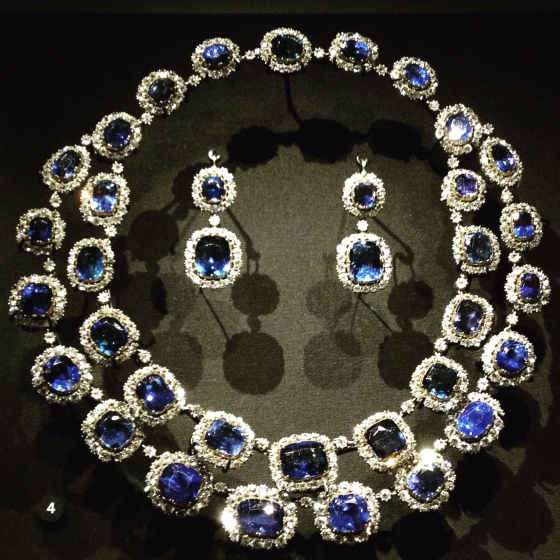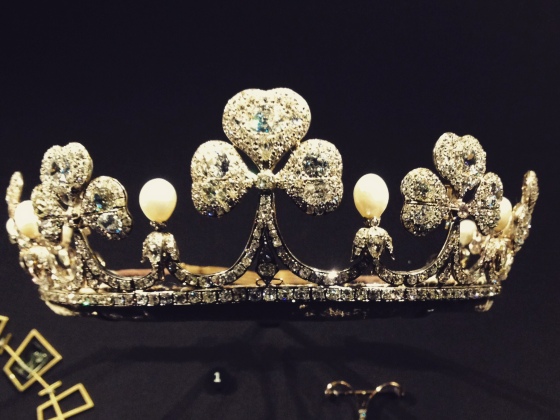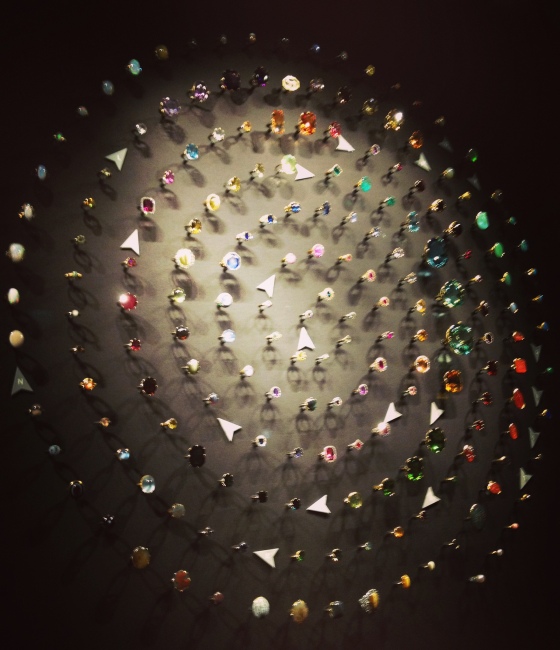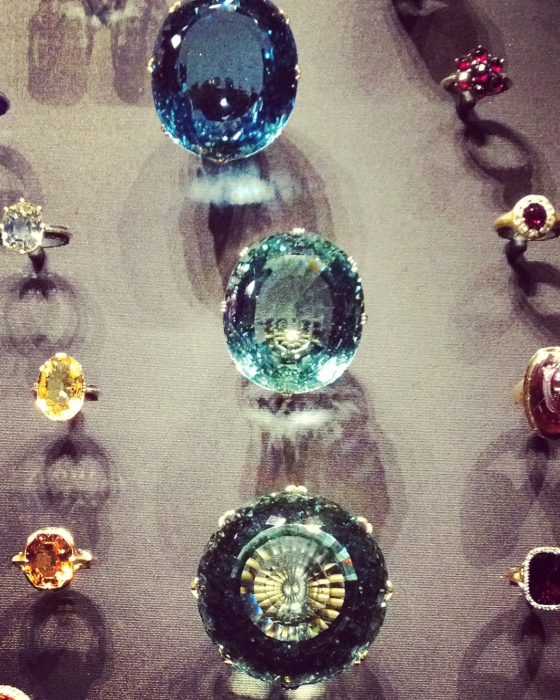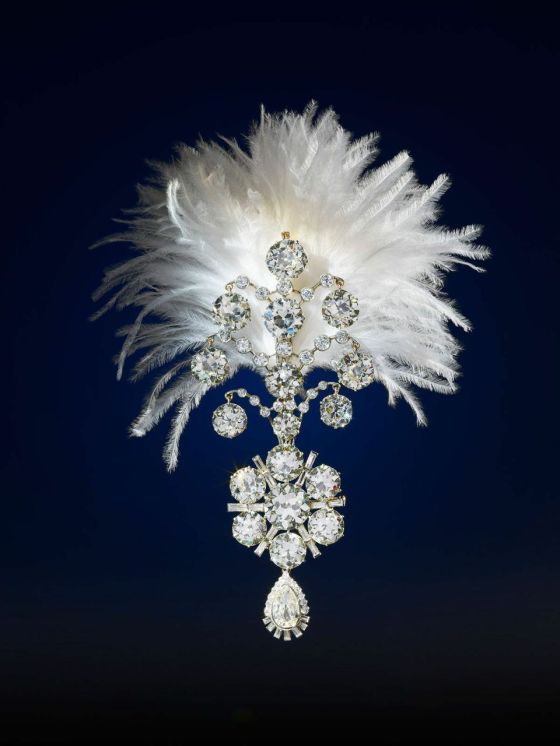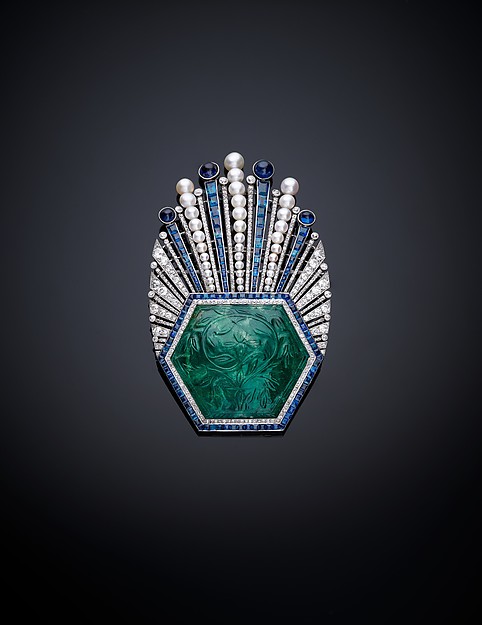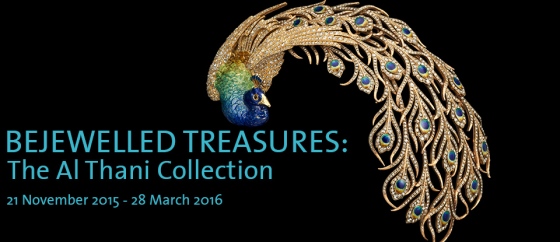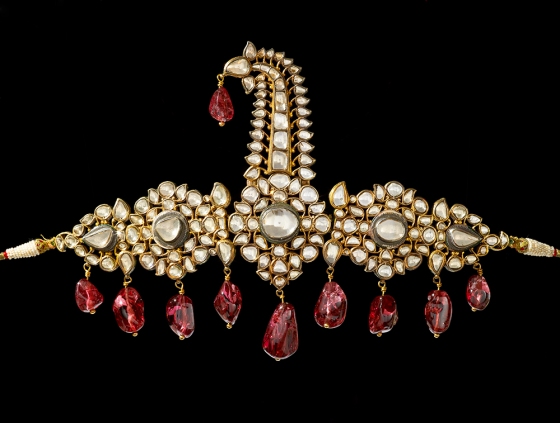
Spinel, Diamond and Kundan Turban jewel (c 19th century)
This is a stunning exhibition, featuring treasures from the early 17th Century Mughal empire, Indian sub-continent, and Europe – influenced by India and the Ballet Russes – right up to the present day with modern interpretations of Indian jewellery style, design and techniques.
Almost all items in the exhibition have been loaned by the Al Thani ruling family of Qatar. As well as the earliest known example of Mughal jade, the gobstopping Timur ruby (which is neither from Timur nor a ruby!) on loan from her majesty the Queen, and several examples of modern indian-influenced jewellery on display, there are 400 years of indian jewellery represented here.
From the V&A website:
From ancient times, the royal treasuries of India contained vast quantities of precious stones.
“You’re able to see the very important position of jewellery in Indian society at all times and at many levels,” she said. “Indian courts have always had huge treasuries … if you lose the treasury you lose power, so jewellery has a fundamental importance in Indian history.”
Diamonds were found within the subcontinent, most famously in the southern region of Golconda. The best rubies came from Burma. Sri Lanka supplied sapphires, and from the 16th century emeralds were brought from South America to Goa, the great Eastern market for gemstones. These were of a size, colour and clarity that had never been seen before.
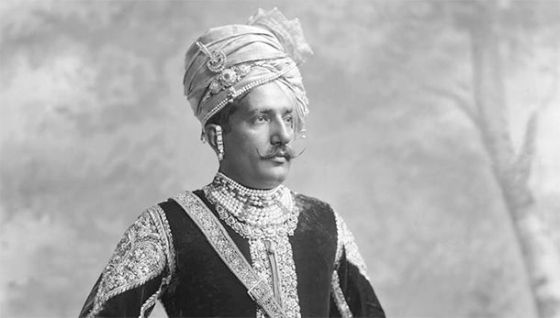
At the Mughal court, Iranian traditions shaped the culture of the Persian-speaking elite. Here, the classification of gemstones was completely different. From the late 16th century, the most valuable stones were deep red spinels, found in Badakhshan in Central Asia. Spinels are similar to rubies, but are gemmologically distinct. The finest were appreciated for their colour, size and translucency, and were engraved with the emperors’ titles. Their spinels were not usually faceted, but the royal gem-cutters gouged out any unsightly inclusions and simply polished the irregular surface.
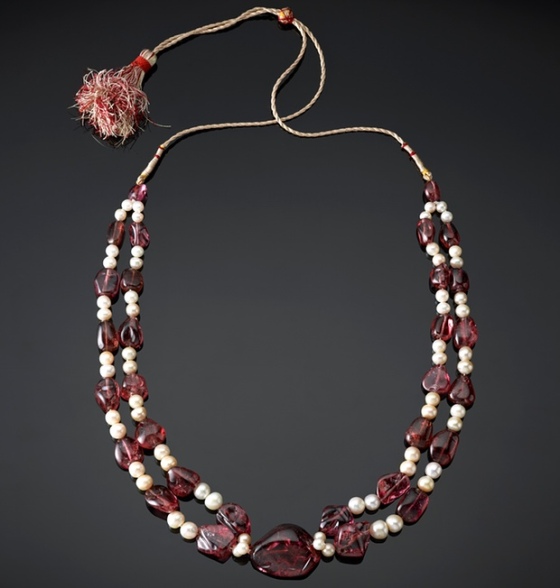
Imperial Spinel and Pearl necklace (N.India c 18th century)

A crescent shaped emerald
Another piece, a brooch with a large crescent-shaped emerald at it’s centre, dates from 1910. It was given to the beautiful Spanish flamenco dancer Anita Delgado by the Maharaja of Kapurthala. The story goes; seeing her dance in Madrid, he fell in madly in love with her, married her and brought his new 16-year-old bride back to India. When, aged 19, she saw the emerald on an elephant, the Maharaja handed her the precious stone and remarked: “Now you can have the moon, my capricious little one.”
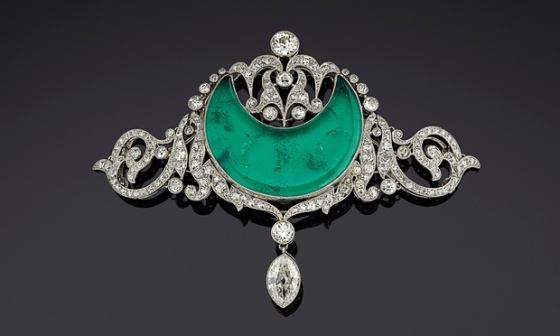
Crescent Emerald with Diamonds, (Paris c 1910)
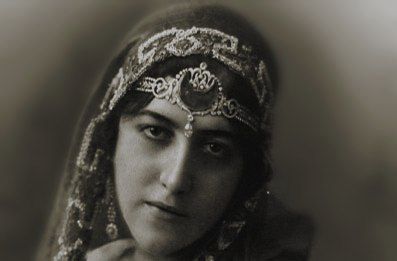
Anita Delgado wearing her crescent Emerald
Another of the Maharani’s jewels is Parisian jeweller Meller’s peacock corsage or aigrette (hair ornament). The Maharajah had bought the piece and gave it to her at their civil wedding ceremony in Paris. The peacock ornament is made of gold, diamonds and enamel which, as the exhibition’s curator Susan Stronge says in her accompanying book, “produced a shimmer closer to that of real feathers” and decorates the body of the bird and the blue/ green tips of the sweeping gold and diamond feathered tail.
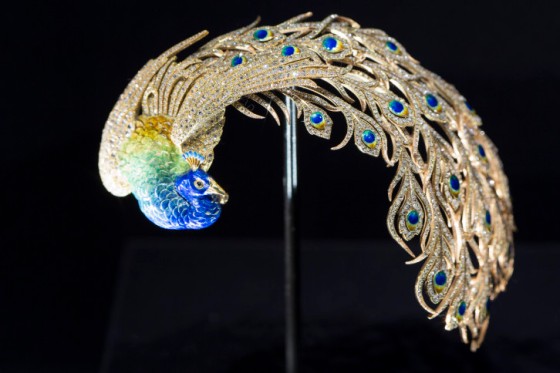
Gold, Diamond and Enamel aigrette (Meller, Paris c 1910)
If you haven’t been yet this spectacular collection is only on view until the 28th March 2016.
xx
Photographs: Al Thani Collection

